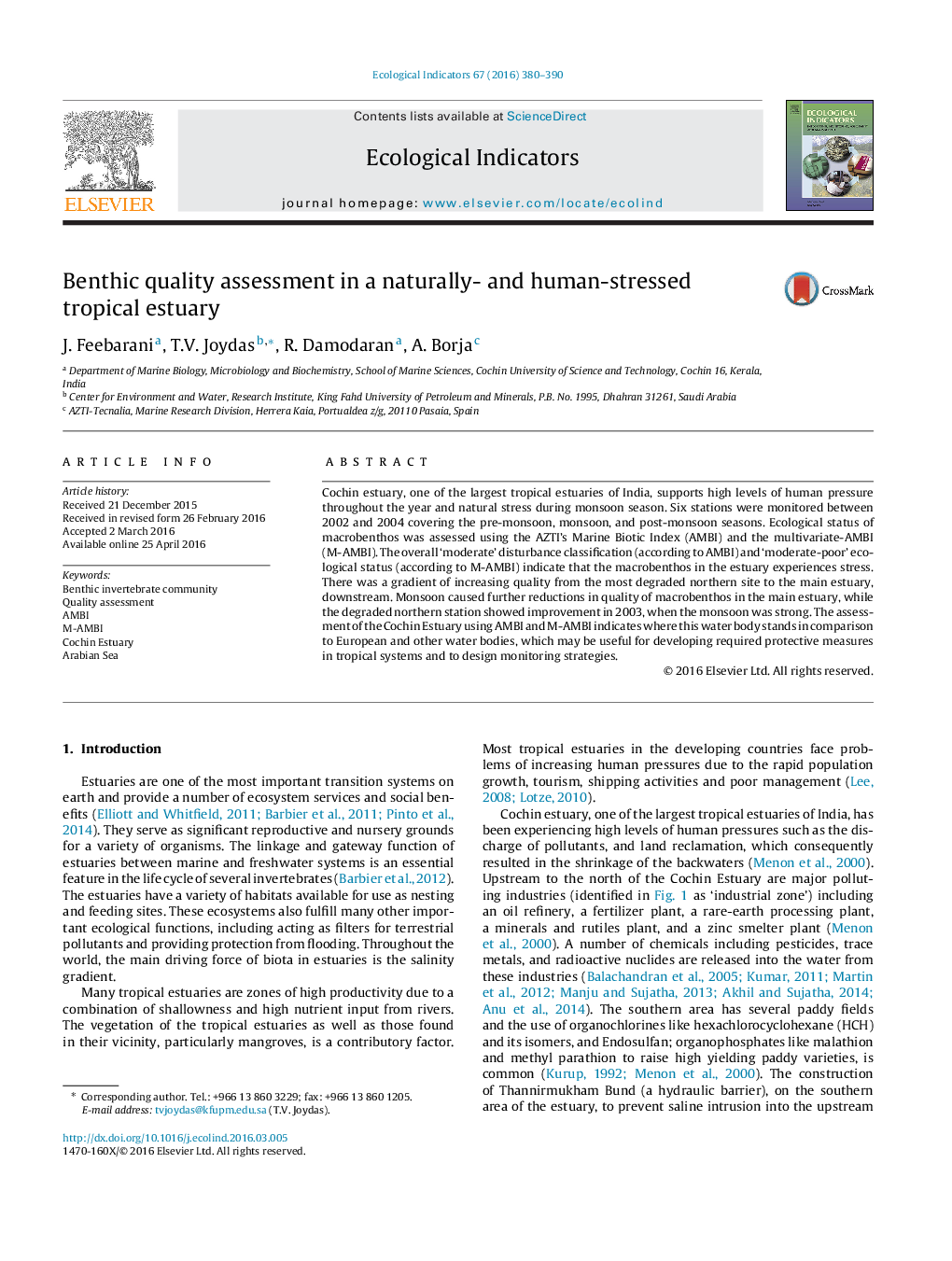| Article ID | Journal | Published Year | Pages | File Type |
|---|---|---|---|---|
| 4372885 | Ecological Indicators | 2016 | 11 Pages |
•Cochin Estuary faces stress from human pressures and natural stress.•Human pressures were evident from ‘moderate-poor’ ecological status of benthos.•The quality increased from the most degraded northern site to the main estuary.•During monsoon, the quality in the main estuary is reduced.•The degraded northern site showed some improvement during monsoon period.
Cochin estuary, one of the largest tropical estuaries of India, supports high levels of human pressure throughout the year and natural stress during monsoon season. Six stations were monitored between 2002 and 2004 covering the pre-monsoon, monsoon, and post-monsoon seasons. Ecological status of macrobenthos was assessed using the AZTI's Marine Biotic Index (AMBI) and the multivariate-AMBI (M-AMBI). The overall ‘moderate’ disturbance classification (according to AMBI) and ‘moderate-poor’ ecological status (according to M-AMBI) indicate that the macrobenthos in the estuary experiences stress. There was a gradient of increasing quality from the most degraded northern site to the main estuary, downstream. Monsoon caused further reductions in quality of macrobenthos in the main estuary, while the degraded northern station showed improvement in 2003, when the monsoon was strong. The assessment of the Cochin Estuary using AMBI and M-AMBI indicates where this water body stands in comparison to European and other water bodies, which may be useful for developing required protective measures in tropical systems and to design monitoring strategies.
